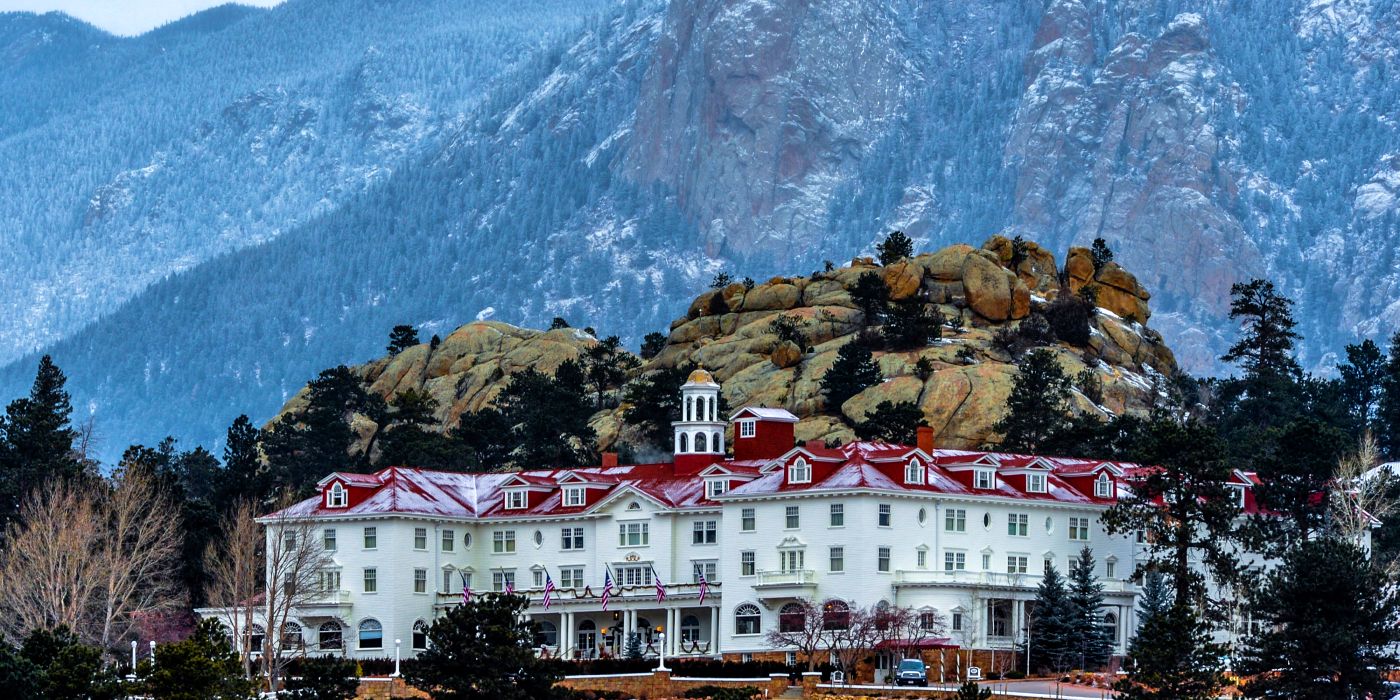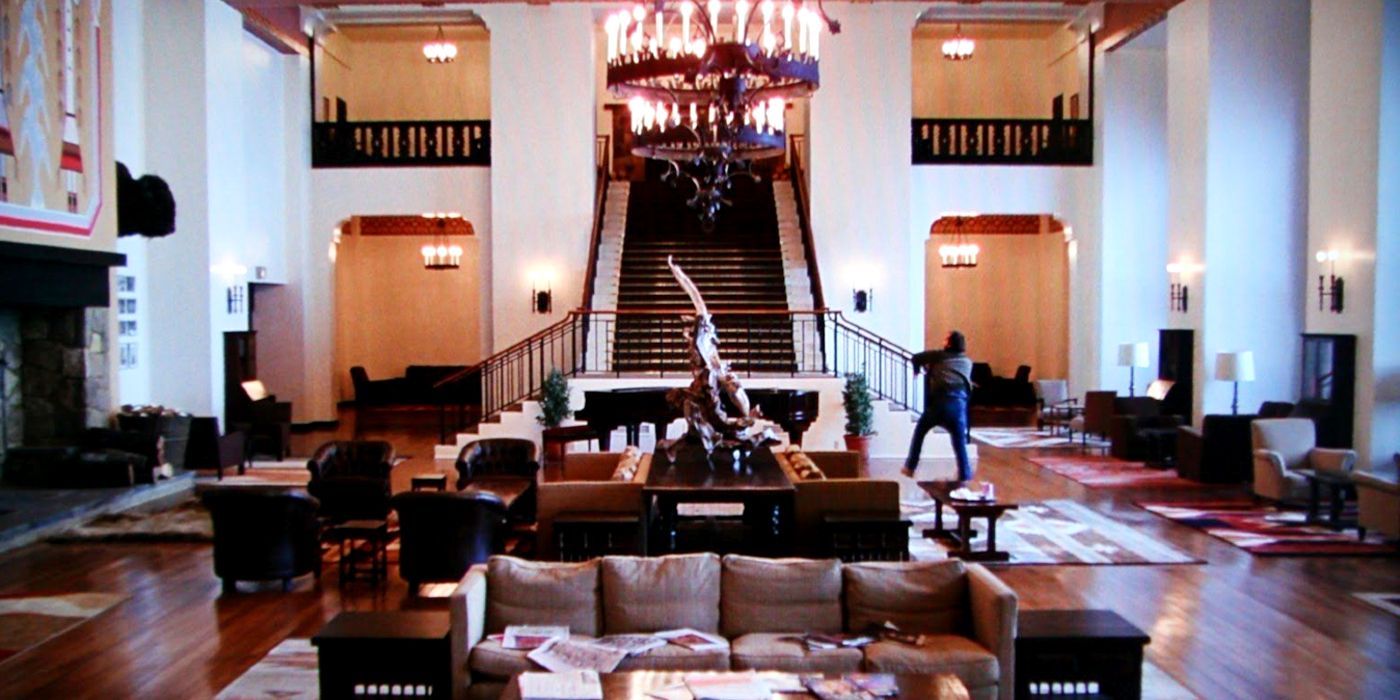Stephen King published his third novel, The Shining, in 1977 and the book quickly became the iconic horror author's first bestseller. Adapted for the screen by director Stanley Kubrick in 1980, The Shining has since become one of King's most widely known and applauded literary works.
Following Jack Torrance, his wife Wendy, and their son Danny to the grand, but remote Overlook Hotel during a harsh Colorado winter, The Shining explores both psychological and physical horror. After accepting the job of caretaker at the Overlook, Jack, a troubled writer and recovering alcoholic, begins to experience symptoms of cabin fever while Danny sees a number of ghosts throughout the grounds of the hotel. As tensions tighten amongst the small family, Jack's anger issues and drinking problem making him increasingly irritable, the weather worsens and the Torrances become trapped in their own isolated nightmare.
Perhaps one of the most notable and sought-after locations in horror film history, a mention of The Shining's Overlook Hotel sparks immediate images of great halls, hedge-mazes, deserted bars and winding corridors. Inspired by personal experiences during his one-night visit to The Stanley Hotel in 1974, King's creation of the Overlook was rooted in reality, many of the visual descriptions stemming from his stay at The Stanley. Though the now-famous hotel seen in Kubrick's film adaptation of the novel doesn't physically exist, the director used exterior shots of Oregon's Timberline Lodge, while the interior was largely inspired by the Ahwahnee Hotel in Yosemite National Park, California.
The Overlook Hotel's Location & Design Inspiration
Several aspects of both the setting and narrative of King's novel were inspired by the author's real life experiences, the original concept of The Shining came to him while he stayed at The Stanley Hotel in Estes Park, Colorado. While living in Boulder, the hotel was recommended to King and his wife by locals, so the couple decided to stay for an evening. Due to the approaching winter, The Stanley was beginning to shut down for the season, leaving it empty and eerily silent, much like the novel's depiction of the Overlook. King recounts visiting the bar where he was served by a bartender called Grady, a name the author later used for the former Overlook caretaker who loses his mind and kills his family in the hotel. Upon returning to his room, number 217, King pulled back the curtain of a claw-foot tub and thought of someone dying there, prompting the first wave of ideas that became The Shining.
In several interviews, King recalls the emptiness of The Stanley and the way inspiration came to him as he wandered the halls and ate in the deserted dining hall, where he and his wife were the only patrons. King also says he remembers waking from a dream in which his three-year-old son was being chased down the hotel's hallways by a firehose. The author woke abruptly and began to flesh out his narrative for The Shining, the snow covered Rocky Mountains visible through his room's window. Following the release of King's miniseries adaptation of The Shining on ABC in 1997, The Stanley Hotel became a tourism hot spot for fans, offering an in-house psychic, guided ghost tours, and themed film festivals. The Stanley even went so far as to build a hedge-maze on the grounds in an effort to please visiting enthusiasts—while the maze is not a part of King's novel, it became a notable plot point in Kubrick's film.
Though the original concept of the Overlook was birthed from King's stay at the Stanley Hotel, the film adaptation looked for inspiration elsewhere, gathering interior and exterior details from several existing locations. For his film, Kubrick decided to use the Timberline Lodge on Mount Hood in Oregon, its isolated, sprawling exterior becoming the face of the Overlook on screen. The interior of Kubrick's Overlook was heavily inspired by the Ahwahnee Hotel located in Yosemite National Park and the film's set bears striking similarities, specifically the great hall where Jack does his typing and the staircase he climbs as he taunts a bat-wielding Wendy. The memorable opening shot of The Shining was filmed along Going-to-The-Sun Road, a remarkably scenic route through the Rocky Mountains located in the Glacier National Park area of Montana.


